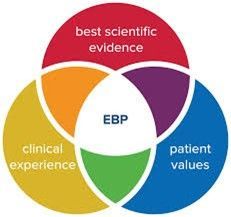World-Class Quality Programs in Behavioral Health
Mental disorders are common worldwide, yet the quality of care for these disorders has not increased to the same extent as that for physical conditions.

Behavioral health organizations (BHOs) need to challenge their assumptions of quality to become world-class quality programs. Because the payor environment is changing throughout the country, both private (managed care) and public (state or counties) will demand more accountability. The push for value-based purchasing is one initiative that requires a behavioral health organization to manage the care of clients by episode, diagnosis, or length of stay.
For BHOs to become world-class quality programs, it may take a page from the manufacturing industry. In an article from Quality Magazine in 2016, researchers surveyed these companies to determine the characteristics of world-class quality. The indicators mentioned included: quality as strategic and competitive; training employees, understanding performance through the customer, visible metrics on performance, and other markers. In their study, only 1.6% of their respondents had these qualities. Comparing these figures to behavioral health, BHOs need to have consistent measurements that match those of their customers (clients, stakeholders, and payors).
In an article published in World Psychiatry, Amy Kilbourne and her associates looked at how mental health is measured regarding quality. She said, “Mental disorders are common worldwide, yet the quality of care for these disorders has not increased to the same extent as that for physical conditions.” Some recommendations listed were for routine assessment of outcomes, and measurement-based care. She went on to say, “Measures are also lacking for mental health conditions commonly experienced in populations, such as anxiety disorders, and lacking in depth for evidence‐based treatments such as psychotherapy.” Improving not only the quantity of services but their effectiveness needs more precise measurements.
Moreover, the National County on Quality Assurance (NCQA) release its report in 2021 on Behavioral Health Quality Framework. In its report, one of its findings was, “BH (behavioral health) integration is inconsistently and insufficiently measured by current standardized measures. They recommend that measures must be aligned from the State and Federal governments to the managed care agencies and down to the facility level. With this level of coordination, then synchronicity of quality can occur.
In summary, for organizations to become world-class quality BHOs, they must communicate with their payors on the state and managed care level. Determining the measurements, practices, and treatments that are agreeable among all parties then coordinates the measurement of quality. Also, employees must be focused on how they impact quality. The clinician who sees a client and gives them an assessment before and after treatment needs to understand how their “paperwork” has significance to the client and the payor system.




